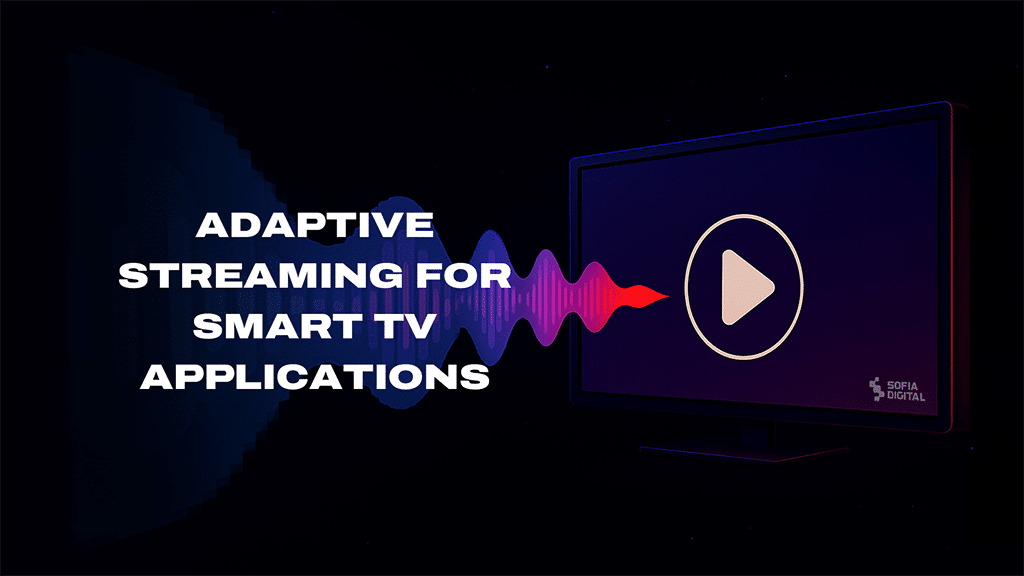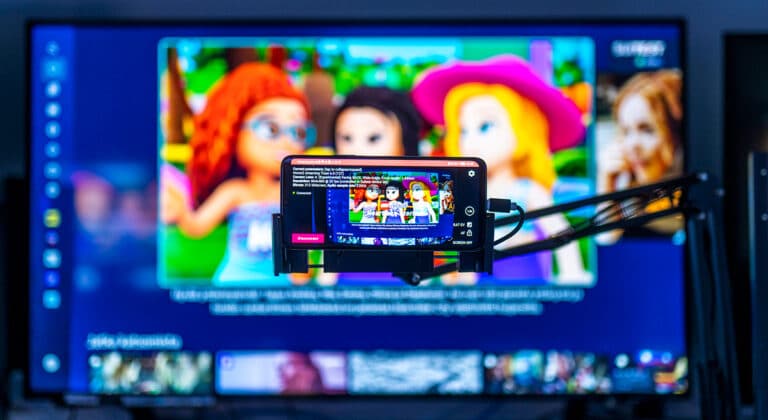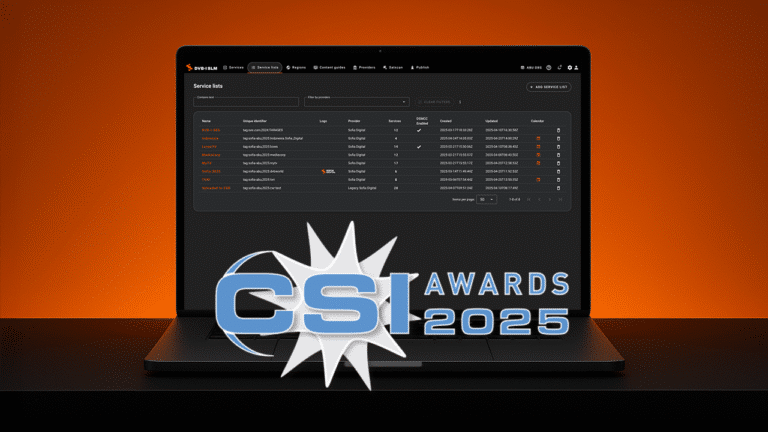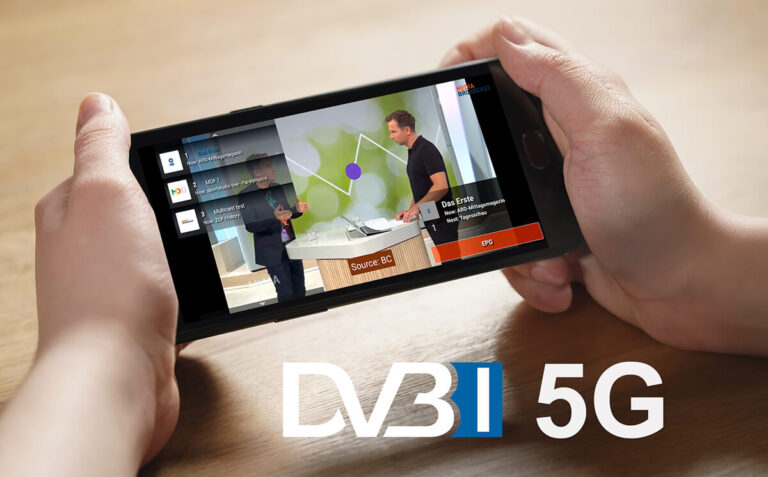
In the previous post, we implemented a very basic user interface for the Smart TV video player. Today, we take the next step in enhancing your Smart TV app by exploring adaptive streaming —a method that dynamically adjusts video quality to suit fluctuating network conditions, ensuring a smoother playback experience.
What Is Adaptive Streaming?
Adaptive streaming is a technique used to deliver video content by breaking it into small segments and encoding each segment at multiple quality levels. As the viewer’s network speed changes, the video player switches between these quality levels to maintain uninterrupted playback.
Key Benefits:
- Seamless Playback: Minimizes buffering and playback interruptions.
- Optimized Quality: Delivers the best possible quality based on the user’s bandwidth.
- Enhanced User Experience: Reduces frustration from quality drops and stuttering, crucial for consumer satisfaction.
How Does Adaptive Streaming Work in Smart TV Apps?
At the core of adaptive streaming is a manifest file (commonly in formats like MPEG-DASH or HLS) that lists multiple versions of the same video at different quality levels. A well-built Smart TV app will:
- Monitor Network Conditions: Continuously measure the user’s bandwidth and device performance.
- Select the Optimal Stream: Dynamically pick the stream that best matches current conditions.
- Handle Seamless Switching: Transition smoothly between quality levels without interrupting playback.
It’s important to note that different video encodings — like H.264, H.265, or AV1 — and their specific profiles can impact how well adaptive streaming works across different devices. This is why thorough testing on actual Smart TVs is crucial.
Code examples
This time, we’ll stay within the `js/player.js` file. The changes are small—but they make a big difference.
Example configurations
// Adaptive streaming config
const configs = {
streaming: {
bufferingGoal: 30,
rebufferingGoal: 15,
useNativeHlsOnSafari: true
},
abr: {
enabled: true
}
};
Js/player.js
This block defines the adaptive streaming configuration for Shaka Player. It sets how much video to buffer ahead and behind, enables adaptive bitrate (ABR) switching, and specifies constraints like max resolution and minimum bandwidth. These settings help optimize playback performance, reduce buffering, and ensure smooth quality transitions based on network conditions and device capability.
Setting the configuration
async function init(url) {
// Create a Player instance.
const video = document.getElementById('video');
video.style.display = "block";
const player = new shaka.Player(video);
player.configure(configs); // apply the config
window.video = video;
....
Js/player.js
In this snippet, a new instance of Shaka Player is created and attached to the video element. The player.configure(configs) line then applies a set of custom settings (like buffering behavior, bitrate switching, and playback restrictions), tailoring how the player handles adaptive streaming and overall playback performance.
Best Practices for Adaptive Streaming on Smart TV
- Buffer Management: Ensure your player’s buffering strategy is tuned for Smart TV environments. Buffer too little, and you risk frequent rebuffering; buffer too much, and you may waste memory or delay quality switches.
- Quality Switch Algorithms: Invest in a smart algorithm that minimizes the visual impact of quality transitions. Consider factors like abrupt bandwidth drops or transient network issues.
- Testing Under Real-World Conditions: Simulate various network conditions to observe how your adaptive streaming performs. Always test on real devices under varied network conditions. Codec support (H.264, H.265, AV1) can differ across TVs.
- User Feedback: Monitor metrics such as playback stalls, quality switch frequency, and overall user engagement. Use these insights to refine your adaptive streaming strategy over time.
Common Pitfalls to Avoid
- Ignoring Network Variability: Not all users have high-speed connections. Failing to implement adaptive streaming may lead to poor experiences for those on slower networks.
- Overcomplicating the UI: While it might be tempting to display detailed quality metrics to the user, simplicity is key. Let the adaptive mechanism work in the background without distracting the viewer.
- Inadequate Error Handling: Always implement fallback mechanisms if the adaptive stream fails to load or if quality transitions are too frequent.
Next Steps
As you advance your Smart TV app, there are more complex areas to explore:
- DRM (Digital Rights Management): Protecting video content with encryption.
- Live vs. VOD Streaming: Handling live streams introduces additional challenges like low latency switching and time shifting.
- Codec Variations: Ensuring playback compatibility across H.264/AVC, H.265/HEVC, VP9 and AV1.
- Different Players: Remember, while this example uses Shaka Player, every player has its own quirks and configuration methods.
Check out our Player Selection Guide to learn more about choosing the right player for your needs.
Conclusion
Adaptive streaming is an indispensable component in modern Smart TV applications. By dynamically adjusting video quality to match network conditions, you ensure that users enjoy a consistent, high-quality viewing experience regardless of their connection speed. As you continue to enhance your Smart TV app, integrating adaptive streaming will not only improve performance but also boost overall user satisfaction.
Read More about Smart TV Application development
For further insights into Smart TV app development, design, and testing, explore these related resources:
General Info About Smart TV App Development
📌 Smart TV App Development Guide
Guide for everything you should know about Smart TV app development.
📌 Smart TV Operating Systems: Android TV, Tizen, webOS, Fire TV, and More
Overview of the major Smart TV platforms, their differences, and key development considerations.
📌 Designing Multiplatform Smart TV Applications
How to design Smart TV apps that work across multiple platforms while maintaining usability and performance.
📌 Designing Multiplatform Smart TV Applications – Part 2: Problems & Solutions
Common challenges in multiplatform Smart TV development and practical solutions.
Technical Development & Coding Guides
📌 How to Build Your First Smart TV Application
A step-by-step guide to developing a Smart TV app, from setup to deployment.
📌 Spatial Navigation for Smart TVs
How to implement directional navigation and focus handling for remote-controlled interfaces.
📌 How to Handle Remote Control Key Events in Smart TV Application Development
Managing remote control input events across different Smart TV platforms.
📌 Pointer Events for Smart TV Applications
Handling pointer-based interactions, such as air mice, trackpads, and touchscreen remotes.
Smart TV UX
📌 How to Design UI/UX for Smart TV Apps
Best practices for large-screen usability, readability, and remote control navigation.
📌 Smart TV UX/UI Design Challenges
Common pitfalls in Smart TV UX and how to design a user-friendly, high-performance application.
Video Players
📌 Choosing a Video Player for Smart TV Development
How to select the right video player engine based on platform compatibility, DRM requirements, and streaming performance.
📌 Step-by-Step Guide to Creating a Video Player for Smart TV Apps
A technical breakdown of building a custom video player for Smart TV applications.
📌 How to Implement a Video Player User Interface on a Smart TV App
Guidelines on designing an intuitive, accessible video player UI for Smart TVs.
Smart TV App Deployment & Testing
📌 Smart TV App Launch Process
An inside look at app submission, approval challenges, and deployment best practices for Smart TV platforms.
📌 Guide to Testing Smart TV Apps – Best Practices
A comprehensive guide covering real-device testing, performance validation, and app store certification





